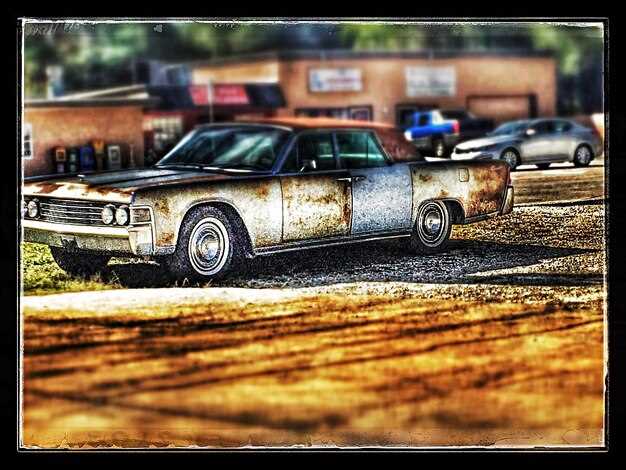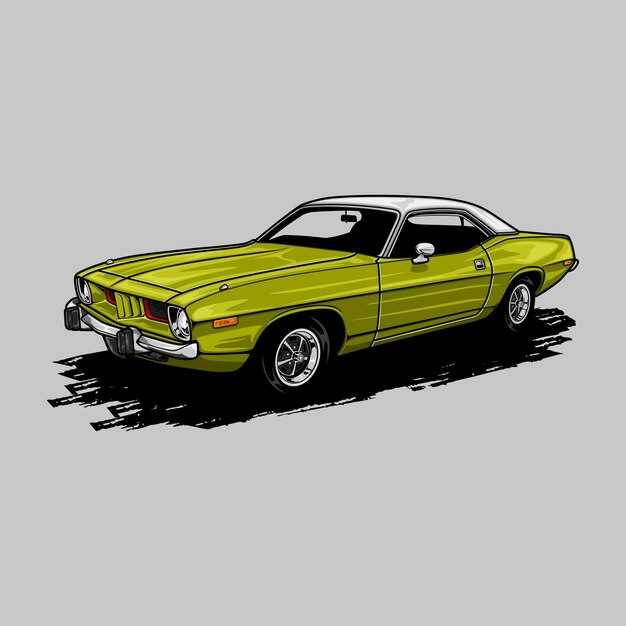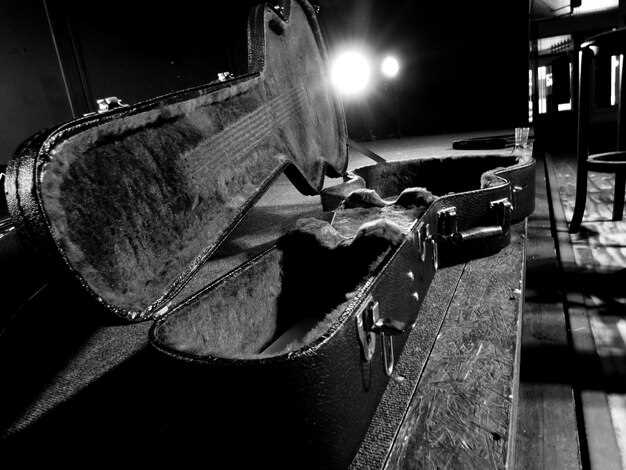
The muscle car movement, synonymous with raw power and aggressive styling, has roots that extend beyond manufacturers and individual enthusiasts. Central to its evolution are various car clubs that fostered community, encouraged competition, and advocated for the culture surrounding high-performance vehicles. These clubs were instrumental in shaping not just the landscape of muscle cars, but also the experiences of countless individuals passionate about speed and horsepower.
From the post-war era to the peak of the 1960s and 1970s, several key organizations emerged, creating an environment where like-minded individuals could connect, share knowledge, and push the limits of their vehicles. These clubs provided a platform for showcasing the latest in car modifications and performance upgrades, while also serving as a breeding ground for camaraderie and friendly rivalries that defined the muscle car ethos.
In this article, we delve into the influential car clubs that played a pivotal role in the muscle car movement. By exploring their impact on automotive culture, we will uncover how these organizations not only celebrated the power of American muscle but also contributed to the lasting legacy of iconic cars that continue to rev hearts and engines today.
The Birth of Muscle Car Clubs in the 1960s
In the 1960s, the American automotive landscape witnessed a dramatic evolution with the emergence of muscle cars. These powerful vehicles captivated enthusiasts and formed the foundation for a burgeoning community of car lovers. With their combination of performance, style, and affordability, muscle cars quickly became the centerpiece of car culture in this era.
The concept of muscle car clubs began to take shape as passionate individuals sought to connect with like-minded fans. These clubs created a sense of belonging and provided a platform for members to share knowledge, showcase their vehicles, and participate in organized events. As the muscle car phenomenon grew, so did the need for structured communities that could support this vibrant culture.
Initially, these clubs were often formed around specific car models or brands, promoting rivalry and camaraderie among members. For instance, fans of the Chevrolet Camaro often gathered, while Ford Mustang enthusiasts would establish their own groups. This division fostered a competitive spirit that was a hallmark of the muscle car movement. Enthusiasts would race their cars, participate in car shows, and exchange tips on performance enhancements, creating a rich tapestry of shared experience.
The variety of clubs allowed members to engage in friendly competition and share their passion widely. This era established many legendary clubs, which organized events that would draw in crowds and showcase the best of the muscle car world. Members prided themselves not only on their vehicles but also on their commitment to the community, forming lasting friendships through their shared love for cars.
As the 1960s progressed, the influence of muscle car clubs became increasingly clear. They served as vital hubs for car culture, promoting safety, knowledge, and the joy of driving. The car community solidified its identity through these gatherings, unveiling the power of collaboration among enthusiasts. This momentum laid the groundwork for the muscle car legacy that endures to this day.
Iconic Clubs: Influences on Muscle Car Design
The muscle car phenomenon in America was not solely driven by manufacturers; it was also shaped significantly by various car clubs that emerged during the mid-20th century. These clubs fostered a culture around high-performance vehicles, encouraging members to modify, race, and showcase their cars. Their influence on design and engineering innovations cannot be overstated.
Car clubs provided a platform for enthusiasts to exchange ideas, share tech tips, and inspire each other to push the boundaries of performance and aesthetics. Many of these clubs became known for their unique modifications that catered to speed, style, and personalization. They often hosted informal races and gatherings, which became breeding grounds for new trends in muscle car design.
Prominent examples of influential clubs include the “GTO Association,” which celebrated Pontiac’s GTO as the first true muscle car. Their enthusiasm sought to enhance the car’s performance features, leading to design changes and the introduction of performance packages. Another noteworthy club, the “Camarillo Classic Car Club,” pushed Chevrolet to innovate, resulting in iconic models celebrated for their power and striking aesthetics.
| Club Name | Influence on Design | Notable Models |
|---|---|---|
| GTO Association | Focus on speed and performance parts | Pontiac GTO |
| Camarillo Classic Car Club | Encouraged innovative features and aesthetics | Chevrolet Camaro |
| Mustang Club of America | Promoted customizing and personal flair | Ford Mustang |
| Chevelle Club | Emphasized race-inspired modifications | Chevrolet Chevelle SS |
Through their collective efforts, these clubs not only helped define the muscle car segment but also cemented their legacy in automotive history. The vehicles that have emerged from this era continue to inspire enthusiasts and collectors, demonstrating the lasting impact of car clubs on muscle car design.
How Car Clubs Fostered Performance Enhancements
Car clubs have played a pivotal role in the evolution of muscle cars, particularly in fostering performance enhancements. These clubs created a sense of community among automotive enthusiasts, enabling them to share knowledge, resources, and passion for performance vehicles.
One of the primary ways clubs contributed to performance improvements was through organized events and competitions. Members would come together for:
- Drag races
- Track days
- Car shows
These gatherings not only allowed car owners to showcase their vehicles but also encouraged them to push the limits of performance. Healthy competition inspired participants to modify their cars for better speed, handling, and overall performance.
Within these communities, members exchanged valuable information and expertise. Discussions often included:
- Engine modifications
- Suspension upgrades
- Tuning techniques
- Weight reduction strategies
By pooling their collective knowledge, enthusiasts refined their skills and developed innovative approaches to enhancing muscle car performance.
Many car clubs also collaborated with local shops and manufacturers, which facilitated access to parts and tools necessary for upgrades. This partnership led to:
- Group buying discounts
- Workshops on installation and maintenance
- Custom parts designed specifically for the needs of members
The support and camaraderie found in these communities often resulted in a dedicated culture of modification and experimentation, fueling the muscle car movement. As clubs banded together, they created a network of resources that empowered enthusiasts to see their visions come to life.
Ultimately, the collaboration fostered in car clubs led not only to enhanced performance but also to the establishment of a vibrant community where passion for muscle cars could thrive.
The Role of Regional Clubs in the Muscle Car Community

Regional clubs have been instrumental in fostering the muscle car community by providing a platform for enthusiasts to connect, share experiences, and celebrate their passion for performance vehicles. These clubs often organize events, such as car shows, drag racing competitions, and meet-ups, allowing members to showcase their cars and discuss modifications and restorations.
One significant contribution of regional clubs is their ability to cultivate a sense of belonging among members. Car aficionados often seek camaraderie and support, which these clubs readily offer. New members can learn from experienced enthusiasts, gaining valuable insights into vehicle maintenance and tuning. This exchange of knowledge helps to preserve the muscle car culture while encouraging the next generation of enthusiasts.
Additionally, regional clubs play a vital role in advocating for the muscle car community. They can collaborate with local governments and law enforcement to promote safe driving practices and secure permits for organized events. Through these efforts, clubs help ensure that muscle car events remain legitimate and can continue to thrive, providing a positive image for the automotive hobby.
Moreover, regional clubs often engage in philanthropic efforts, using their passion for cars to give back to the community. By organizing charity car shows or fundraising events, clubs highlight the positive impact of the muscle car culture beyond just performance and aesthetics. These initiatives help to strengthen community ties and promote the values of teamwork and generosity among enthusiasts.
In summary, regional clubs are foundational to the muscle car community, enhancing the experience for car enthusiasts through connection, collaboration, and community engagement. Their efforts not only preserve the legacy of muscle cars but also ensure its vibrant future.
Networking: Beyond Cars – Building Lifelong Friendships
Within the vibrant world of muscle car culture, the connections formed in clubs extend far beyond the realm of automobiles. Car enthusiasts often find themselves united by a shared passion, which fosters a sense of community that can last a lifetime. These relationships typically begin at local meets, where members gather not just to showcase their vehicles, but to share stories and experiences.
As club members participate in events, they create bonds that transcend mere car discussions. The friendships formed often involve collaborative projects, ranging from engine restorations to organizing charity drives. Working together towards a common goal deepens these connections, making the club experience about teamwork and camaraderie.
Moreover, clubs often provide a platform for networking that can lead to personal and professional opportunities. Members may exchange skills, knowledge, and resources that benefit both their automotive interests and their careers. The trust built within these relationships often leads to lifelong connections, where individuals support each other through various life stages.
In essence, the muscle car movement is as much about building a community as it is about showcasing powerful vehicles. The friendships that emerge from shared experiences in car clubs enrich lives and create a legacy that lasts beyond the roar of an engine.
Legacy of Car Clubs: Preservation of Muscle Car Culture

Car clubs have played a pivotal role in the preservation and promotion of muscle car culture throughout the decades. These communities have fostered a deep appreciation for the raw power and iconic design that define muscle cars. By gathering enthusiasts, car clubs create an environment where knowledge, skills, and passion are shared, ensuring that the history and significance of these vehicles are passed down to future generations.
One critical aspect of car clubs is their focus on camaraderie among members. This sense of community strengthens the muscle car movement, encouraging members to restore, modify, and celebrate classic vehicles together. Events such as car shows, cruises, and meets not only showcase individual projects but also unite the community in a collective celebration of automotive history.
Moreover, car clubs often engage in educational initiatives, teaching younger enthusiasts about the mechanics and history of muscle cars. This commitment to sharing knowledge helps cultivate a new generation of car lovers who appreciate the craftsmanship and heritage of these machines. By mentoring newcomers, experienced members ensure that the passion for muscle cars remains vibrant and alive.
In addition to fostering community spirit, car clubs serve as advocates for preserving the muscle car legacy. They often mobilize to address issues such as emissions regulations and vehicle modification laws that could threaten the future of these classic cars. Through organized efforts, car clubs work to protect the interests of muscle car enthusiasts, ensuring that the culture remains intact amidst an ever-evolving automotive landscape.
Ultimately, the legacy of car clubs lies in their unwavering dedication to preserving muscle car culture. Through community building, education, and advocacy, these organizations ensure that the spirit of the muscle car movement continues to thrive for generations to come.




